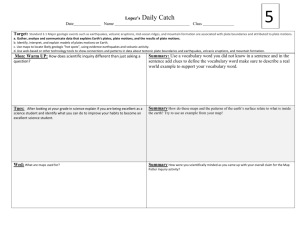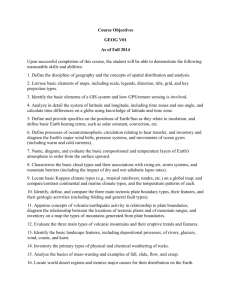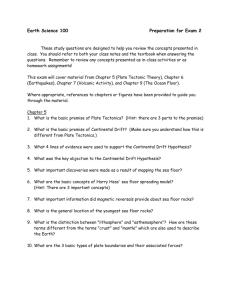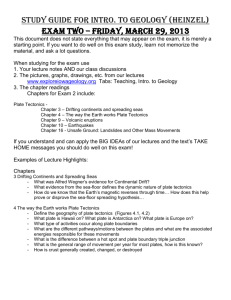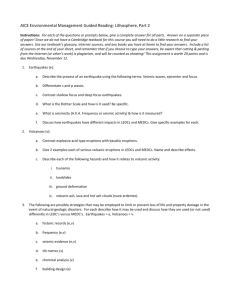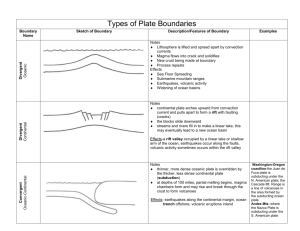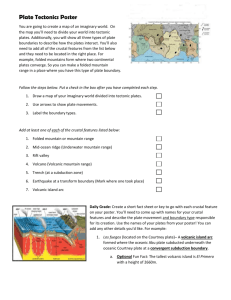Types of questions. 1 a) Name an example of a volcano which you
advertisement
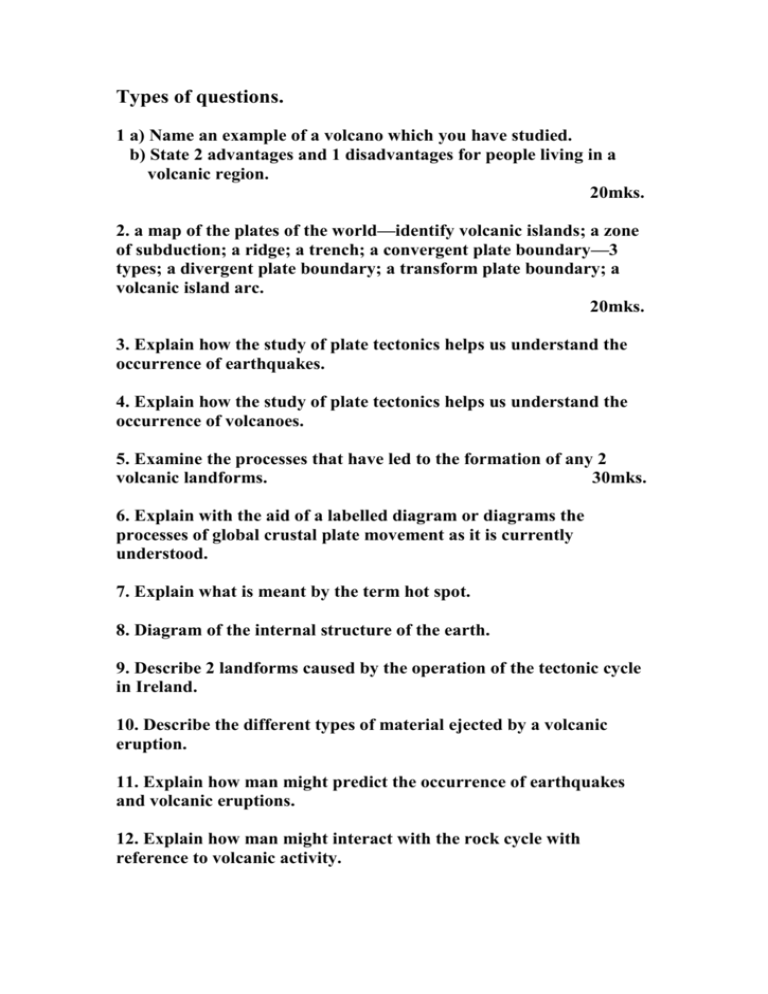
Types of questions. 1 a) Name an example of a volcano which you have studied. b) State 2 advantages and 1 disadvantages for people living in a volcanic region. 20mks. 2. a map of the plates of the world—identify volcanic islands; a zone of subduction; a ridge; a trench; a convergent plate boundary—3 types; a divergent plate boundary; a transform plate boundary; a volcanic island arc. 20mks. 3. Explain how the study of plate tectonics helps us understand the occurrence of earthquakes. 4. Explain how the study of plate tectonics helps us understand the occurrence of volcanoes. 5. Examine the processes that have led to the formation of any 2 volcanic landforms. 30mks. 6. Explain with the aid of a labelled diagram or diagrams the processes of global crustal plate movement as it is currently understood. 7. Explain what is meant by the term hot spot. 8. Diagram of the internal structure of the earth. 9. Describe 2 landforms caused by the operation of the tectonic cycle in Ireland. 10. Describe the different types of material ejected by a volcanic eruption. 11. Explain how man might predict the occurrence of earthquakes and volcanic eruptions. 12. Explain how man might interact with the rock cycle with reference to volcanic activity. 13. Explain what is going to happen to the African plate in the next 20 million years. 14. Describe the 3 types of volcanic eruptions onto the surface of the planet. 15. Describe the results of an earthquake that you have studied. 16. How can man limit the destructive force of earthquakes.


